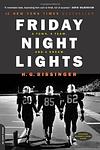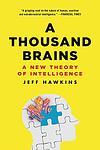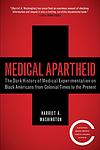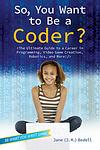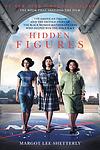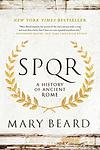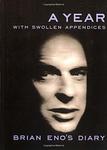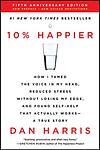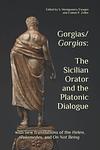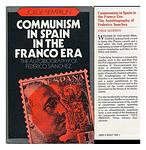The Greatest "Nonfiction" Books Since 1900
Click to learn how this list is calculated.
This list represents a comprehensive and trusted collection of the greatest books. Developed through a specialized algorithm, it brings together 284 'best of' book lists to form a definitive guide to the world's most acclaimed books. For those interested in how these books are chosen, additional details can be found on the rankings page.
Genres
Countries
Date Range
Reading Statistics
Click the button below to see how many of these books you've read!
Download
If you're interested in downloading this list as a CSV file for use in a spreadsheet application, you can easily do so by clicking the button below. Please note that to ensure a manageable file size and faster download, the CSV will include details for only the first 500 books.
Download-
1976. Friday Night Lights by H. G. Bissinger
The book follows the 1988 season of the Permian High School Panthers, a football team in Odessa, Texas. It explores the town's obsession with high school football, the players' experiences and struggles, and the socio-economic, racial, and educational issues that intersect with the sport. The author delves into the pressures and expectations placed on these young athletes by their community and the impact it has on their lives.
-
1977. The Code Breaker by Walter Isaacson
This book delves into the life and groundbreaking work of Jennifer Doudna, a biochemist who played a pivotal role in the development of CRISPR, a revolutionary gene-editing technology. It chronicles her journey from her early days of fascination with the structure of RNA to her Nobel Prize-winning discovery that has opened new frontiers in genetic engineering. Through detailed storytelling, the narrative explores the ethical dilemmas and potential implications of gene editing, while also highlighting the collaborative and competitive world of scientific research. The book not only celebrates a monumental achievement in biotechnology but also prompts readers to ponder the future of human evolution.
-
1978. Numbers Don't Lie by Vaclav Smil
In "Numbers Don't Lie," the author presents a compelling exploration of the essential statistics and facts that shape our understanding of the modern world. Through a series of insightful essays, the book delves into a wide range of topics, from energy and transportation to food production and environmental challenges. By analyzing data and debunking common misconceptions, the work offers readers a nuanced perspective on the complexities of technological advancement and its impacts on society. The author's rigorous approach to quantifying human progress and setbacks encourages a deeper appreciation for the role of empirical evidence in public discourse, making it a thought-provoking read for anyone interested in the interplay between science, technology, and culture.
-
1979. A Thousand Brains: A New Theory Of Intelligence by Jeff Hawkins
This book introduces a groundbreaking theory of intelligence, proposing a novel understanding of how the brain works. It challenges traditional models by suggesting that the brain operates not through a single engine of reasoning but through a network of many tiny brains working in parallel. Each of these "brains" is a specialized unit responsible for understanding the world through a specific lens. The author, a renowned figure in the field of neuroscience and artificial intelligence, combines the latest scientific research with accessible explanations to explore how this theory could not only revolutionize our understanding of human intelligence but also pave the way for more advanced and empathetic artificial intelligence systems. Through this lens, the book delves into the implications for how we learn, how we make decisions, and how we perceive the world around us.
-
1980. Play Nice But Win by Michael Dell
This book offers an insider's perspective on the high-stakes world of technology and business, chronicling the journey of a visionary entrepreneur who transformed a small startup from his dorm room into a global powerhouse. Through a blend of personal memoir and business strategy, the narrative delves into the challenges and triumphs faced in the competitive tech landscape, emphasizing the importance of innovation, leadership, and strategic decision-making. The author shares candid insights and behind-the-scenes stories of battles fought both in and out of the boardroom, advocating for a balanced approach to competition that combines fierce determination with ethical conduct. It serves as both an inspirational roadmap for aspiring entrepreneurs and a reflective look at the relentless pursuit of success in the ever-evolving tech industry.
-
1981. How To Avoid A Climate Disaster by Bill Gates Sr.
In "How to Avoid a Climate Disaster," the author presents a comprehensive and accessible exploration of the challenges and potential solutions to mitigate climate change. Drawing on his extensive experience in technology and philanthropy, he outlines the current state of global emissions and their impacts on the planet. The book emphasizes the importance of innovative technologies and government policies in transitioning to cleaner energy sources. It offers a pragmatic approach to reducing greenhouse gas emissions to zero by advocating for a combination of renewable energy adoption, carbon capture techniques, and advancements in agriculture and manufacturing. The author's insights aim to mobilize individuals, businesses, and policymakers towards urgent action to avert the catastrophic effects of climate change.
-
1982. Medical Apartheid by Harriet A. Washington
This book is a comprehensive history of medical experimentation on African Americans from the era of slavery to the present day. It investigates the racial disparities in healthcare and delves into the dark history of unethical and often deadly experiments conducted on black people in the United States. The author explores the roots of these practices, their implications, and the ongoing struggle for racial equality in the healthcare system.
-
1983. So, You Want To Be A Coder? by Jane Bedell
This book serves as a comprehensive guide for young readers who are interested in pursuing a career in coding. It explores various aspects of the coding profession, including different types of programming languages, essential skills for success, and the wide range of career opportunities available in the field. The book also provides practical advice on how to get started with coding, featuring interviews with professionals in the industry and step-by-step projects to help beginners practice their skills. Aimed at inspiring the next generation of coders, it is an informative resource that combines educational content with engaging activities.
-
1984. Hidden Figures by Margot Lee Shetterly
The book chronicles the inspiring and previously underappreciated stories of African American female mathematicians who worked at NASA during the mid-20th century. These brilliant women, known as "human computers," played a crucial role in America's space race by performing complex mathematical calculations that were essential for the success of numerous space missions, including John Glenn's historic orbit around the Earth. Despite facing racial and gender discrimination, their perseverance and intelligence not only broke barriers but also set new standards for what women and minorities could achieve in fields dominated by white men.
-
1985. Mapping The Heavens by Priyamvada Natarajan
"Mapping the Heavens" provides a captivating exploration of the cosmos, tracing the radical developments in our understanding of the universe from historical celestial cartography to modern astrophysics. The book delves into key discoveries and the innovative thinkers behind them, such as dark matter, dark energy, and black holes, while also examining the evolving tools and technologies that have propelled our knowledge forward. Through this journey, the book highlights how our perception of the universe's structure has expanded and how these insights challenge our notions of space, time, and the cosmos itself.
-
1986. Sex In The Sea by Marah J. Hardt
"Sex in the Sea" explores the unique and often bizarre mating behaviors of marine creatures. The book delves into the reproductive habits of various sea animals, revealing how they have adapted to their aquatic environments to ensure the survival of their species. From coral spawning to the seductive dances of seahorses, the author combines scientific research with engaging storytelling to illuminate the challenges and intricacies of underwater reproduction. The narrative also highlights the impact of human activities on marine life and emphasizes the importance of ocean conservation in safeguarding these fascinating reproductive phenomena.
-
1987. White Trash by Nancy Isenberg
The book explores the history and complex socio-economic and political implications of the derogatory term "white trash" in America. It traces the origins and evolution of the concept from the early days of British colonization to the present, revealing how class prejudices have shaped American society and politics. The narrative challenges the conventional views of American history and highlights the role of class and social stratification in perpetuating inequality and stereotypes about poor white communities. Through meticulous research, the book provides a provocative reexamination of America's class system and its impact on national identity.
-
1988. Women In Science by Rachel Ignotofsky
This illustrated book celebrates the contributions of fifty pioneering women in the fields of science, technology, engineering, and mathematics (STEM) from the ancient to the modern world. It highlights the achievements and stories of notable women who overcame significant obstacles to break barriers in their respective fields, including Marie Curie, Jane Goodall, and Katherine Johnson. Each profile combines engaging artwork with informative text, making the complex world of science accessible and inspiring for young readers and aspiring scientists, particularly girls and young women, emphasizing the importance of diversity and perseverance in STEM.
-
1989. Primera Persona by Margarita García Robayo
"Primera Persona" is a collection of autobiographical essays that delve into the author's experiences navigating the complexities of identity, migration, and cultural dislocation. With sharp wit and unflinching honesty, the author reflects on her life growing up in Colombia, her move to Argentina, and the challenges of establishing herself as a writer in a foreign land. The essays explore themes of family, memory, and the search for belonging, offering a poignant and often humorous look at the intersections of personal history and broader socio-cultural dynamics. Through her narrative, the author invites readers to consider the multifaceted nature of selfhood and the universal quest for connection and understanding.
-
1990. Spqr by Mary Beard
This book is a sweeping historical narrative that delves into the heart of ancient Rome, exploring its rise from an insignificant village in central Italy to a world-dominating superpower that lasted for centuries. The author, a renowned classicist, examines not just the famous emperors and battles, but also the lives of the everyday people, the political and social structures, and the complexities of Roman culture. Through a blend of historical analysis, anecdotal evidence, and a fresh perspective, the book challenges preconceived notions about Roman history and provides a nuanced understanding of how this vast empire's legacy continues to influence the modern world.
-
1991. The Hidden Life Of Trees by Peter Wohlleben
This book offers a fascinating exploration into the complex life of forests, revealing the social networks and communication methods that trees use to survive and thrive. The author, a forester, draws on groundbreaking scientific discoveries to illustrate how trees are like human families: tree parents live together with their children, communicate with them, support them as they grow, share nutrients with the sick and the weak, and even warn each other of impending dangers. With deep understanding and an eye for the wonder of these essential organisms, the narrative transforms the way we perceive trees, encouraging us to appreciate the intricate and interconnected life of the forest.
-
1992. Red Notice by Bill Browder
The book is a gripping true story of high finance, murder, and one man's fight for justice. It chronicles the author's journey from being a foreign investor in Russia to becoming an ardent critic of the Kremlin after his lawyer's death in a Moscow prison. The narrative exposes corruption in the Russian government and details the author's campaign to expose the officials he holds responsible for the lawyer's death, leading to the creation of a law that imposes visa bans and asset freezes on Russian human rights abusers. The book is a blend of financial adventure, geopolitical struggle, and personal crusade, offering an inside look at the world of high-stakes finance and political intrigue in post-Soviet Russia.
-
1993. A Year by Brian Eno
This book is a collection of diary entries, essays, and musings by a renowned musician and producer known for his work in ambient music and contributions to various other genres. Over the course of a year, the author reflects on his creative process, the nature of art and music, and his interactions with other artists and cultural figures. The entries provide insight into his thoughts on the evolution of music, the role of technology in art, and his philosophical perspectives on life and the world around him. The book serves as a window into the mind of an influential artist, offering readers a unique look at his day-to-day life and the intellectual underpinnings of his work.
-
1994. 10% Happier by Dan Harris
"10% Happier" is a memoir that chronicles the personal journey of a skeptical news anchor who embarks on a quest to find inner peace and happiness. Through his encounters with meditation and mindfulness, the author shares his struggles, insights, and the transformative effects these practices have had on his life. With a blend of humor and vulnerability, the book offers a relatable and practical approach to finding greater happiness and balance amidst the chaos of modern life.
-
1995. Gorgias/Gorgias : The Sicilian Orator And The Platonic Dialogue by Coleen P. Zoller, Jurgen R. Gatt, S. Montgomery Ewegen
This book provides a comprehensive analysis of the Platonic dialogue centered on the figure of Gorgias, a renowned Sicilian orator and sophist. It delves into the philosophical conversations between Socrates and Gorgias, along with other interlocutors, exploring themes such as rhetoric, justice, and the nature of the good life. The text examines the intricacies of Socratic dialectic and the contrast between philosophical inquiry and the art of persuasion practiced by sophists. Through this exploration, the book sheds light on the enduring questions about the relationship between power, knowledge, and ethics in the context of human discourse and action.
-
1996. The Five by Hallie Rubenhold
"The Five" is a historical non-fiction book that delves into the lives of the five women who were infamously murdered by Jack the Ripper in the East End of London in 1888. The work challenges the long-standing myth that the victims were all prostitutes, instead painting a vivid picture of the harsh realities faced by women in Victorian England. Through meticulous research, the book reconstructs their personal histories, exploring their backgrounds, the societal conditions that contributed to their unfortunate fates, and the misogyny that has overshadowed their stories. The narrative serves as both a poignant tribute to these women and a critical examination of the historical narratives that have marginalized them.
-
1997. Russia Leaves the War by George F. Kennan
"Russia Leaves the War" is a comprehensive historical analysis of the political, social, and economic factors that led to Russia's withdrawal from World War I. The book provides a detailed account of the internal struggles, international pressures, and key figures that influenced this critical decision. It also explores the impact of the Russian Revolution and the rise of the Bolsheviks on the nation's foreign policy, offering a nuanced understanding of this pivotal period in world history.
-
1998. A Stillness at Appomattox by Bruce Catton
"A Stillness at Appomattox" is a historical narrative that chronicles the final year of the American Civil War, focusing on the campaigns of Ulysses S. Grant in Virginia during 1864-65, culminating in the surrender of Robert E. Lee at Appomattox Court House. The book provides an in-depth exploration of the war's end, bringing to life the personalities, strategies, and profound consequences of these pivotal events. It is renowned for its exhaustive research, vivid detail, and eloquent portrayal of the conflict's human element.
-
1999. Communism In Spain In The Franco Era by Jorge Semprún
This book provides an in-depth analysis of the communist movement within Spain during the rule of Francisco Franco, a period marked by authoritarianism and political repression. It delves into the complexities and challenges faced by communists who operated underground, striving to resist and eventually overthrow Franco's regime. Through a blend of historical documentation and personal narratives, the work sheds light on the ideological struggles, internal conflicts, and the broader impact of communism in Spain's fight for democracy and social justice. The narrative not only explores the political landscape of the era but also examines the human aspect of resistance, highlighting the resilience and sacrifices of those who fought against tyranny.
-
2000. How The World Really Works by Vaclav Smil
This book provides a comprehensive exploration into the fundamental principles that underpin the modern world, focusing on the scientific and technical underpinnings of daily life and global systems. It delves into critical areas such as energy, food production, material goods, and the mechanisms of economic growth, offering insights into how these elements interact to shape our society and environment. Through a blend of detailed analysis and accessible explanations, the author aims to demystify complex processes and encourage a deeper understanding of the realities and challenges facing the world today, emphasizing the importance of informed decision-making in addressing global issues.
Reading Statistics
Click the button below to see how many of these books you've read!
Download
If you're interested in downloading this list as a CSV file for use in a spreadsheet application, you can easily do so by clicking the button below. Please note that to ensure a manageable file size and faster download, the CSV will include details for only the first 500 books.
Download